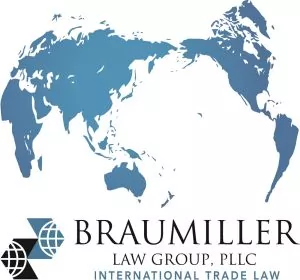In the ever-changing world of trade, where predicting the future is a constant challenge, looking back at the past decade offers valuable insights into the evolution of the supply chain and the tools that have developed to contribute to efficiency and security.
Prior to the mid 1980's, supply chain as a terminology was not generally used. Companies operated in department silos like Sourcing, Purchasing, Production, and Transportation to name a few, and they were not known for communicating with each other. Those departments still exist and the emerging concepts of "shipment life cycle" and "end to end" tracking gave way to the broader supply chain models. Supply Chains became the hallmark of the developing international trade with companies externally sourcing materials, labor, and production seeking the least-expensive and most productive sources of supply. This in turn drove the global transportation system to increase capacity, and governments to begin utilizing automation to increase the speed in which a product can get to market.
We are all aware of how the 9/11 terrorist attacks significantly impacted the global supply chain leading to disruptions and delays and focusing on new security measures, and a need for more data sharing and communication. This eventually led to improvements in data-driven Customs processes, which in turn increased efficiency in some areas. Customs Trade Partnership Against Terrorism, (CTPAT) a program designed to bolster security, emerged as a hero in this landscape, with a mandate to safeguard global commerce and foster trust across international borders.
COVID again changed the landscape, and just so you know, supply chains will never return to "normal". The world is going to have to face continuing challenges for the foreseeable future. With COVID recovery, global supply chains are experiencing an escalation of complexity making them more difficult to manage. Companies are working constantly to adapt to a complicated roadmap of trade regulations and increasing international disruptions. Accordingly, the framework and criteria set forth initially in the CTPAT program would also need to evolve and expand.
The emphasis on partnerships was taking on a new shape. The definition of terrorism that traditionally conjured images of explosions and physical violence was also shifting. Vulnerabilities in the supply chain could be exploited allowing malicious actors to infiltrate and introduce a different caliber of attack, like:
- Contaminate products: Introducing harmful substances into food, medicine, or other essential goods that can cause widespread illness or panic.
- Disrupt critical infrastructure: Targeting transportation networks, warehouses, or communication systems linked to the supply chain can create economic damage and social unrest.
- Manipulate data: Cyberattacks can compromise information systems, leading to product shortages, price fluctuations, or the erosion of public trust.
These types of supply chain attacks share key characteristics with traditional terrorism. They set out to cause intentional harm with the goal of spreading fear, economic damage or even loss of life, as in cases of food and medicine contamination. They intimidate and sow public panic and pressure on decision makers. Disruptions, intentional as in the Red Sea attacks on shipping vessels, or unintentional like the Suez Canal blockage by the Ever Given or the Key Bridge collapse cutting off the port of Baltimore have far-reaching consequences with costly impacts to suppliers, importers, and workers. This is the new arena in which CTPAT operates.
Strengthening cyber defenses. Enhancing supply chain visibility. Building partnerships with international suppliers and between government and private industry to fortify security measures are recognized by US Customs as instruments for CTPAT certified entities to receive head of the line processing at seaports, airports, and land border crossings. CTPAT identified cargo priority means fewer inspections and therefore reduced wait time or delays. That may not sound like much, but let's consider today's cost. A non-invasive (x-ray) exam will typically cost $350 to $500 per container, or truckload. Then you must add any detention fees, transportation to the exam site, (if needed), and any PGA fees and you can easily see $1,000 for a single container exam. And that's if they don't find any anomalies. If they do... well, all bets are off as to how much it could cost. Additionally, all fees must be paid before the container can be released and on its way to its final destination. If you are pulled for an intensive exam the cost can easily double. During time of higher scrutiny of a particular commodity or industry due to intelligence information your container can now be put into a long line awaiting cargo inspection. The benefit of having a CBP Supply Chain Security Specialist assigned to you can expedite communications with port directors and other officials to resolve questions or issues more quickly, again avoiding delays. There are mutual recognition agreements with foreign governments that offer reciprocal benefits in international ports. So, why does CTPAT matter? Because it has become vital to the efficiency of Customs operations, and safe to say it is a prime driver of your status in the global trade community. More and more companies operating in the CTPAT space are opting to do business only with other CPTAT certified companies as it gives security and transparency to their supply chain.
It's been said "There is really very little Customs can do to speed things up, but they can for sure slow you down". Partnering with Braumiller Consulting Group is a great way to get vital assistance in applying to and preparing for CTPAT participation. Don't get sidelined in the next supply chain disruption. Put another way, your CTPAT participation is one of the best navigational tools for your toolbox.
Check out our new Digital Magazine Get the inside scoop on the Braumiller Law Group & Braumiller Consulting Group "peeps." Expertise in International Trade Compliance.
The content of this article is intended to provide a general guide to the subject matter. Specialist advice should be sought about your specific circumstances.

